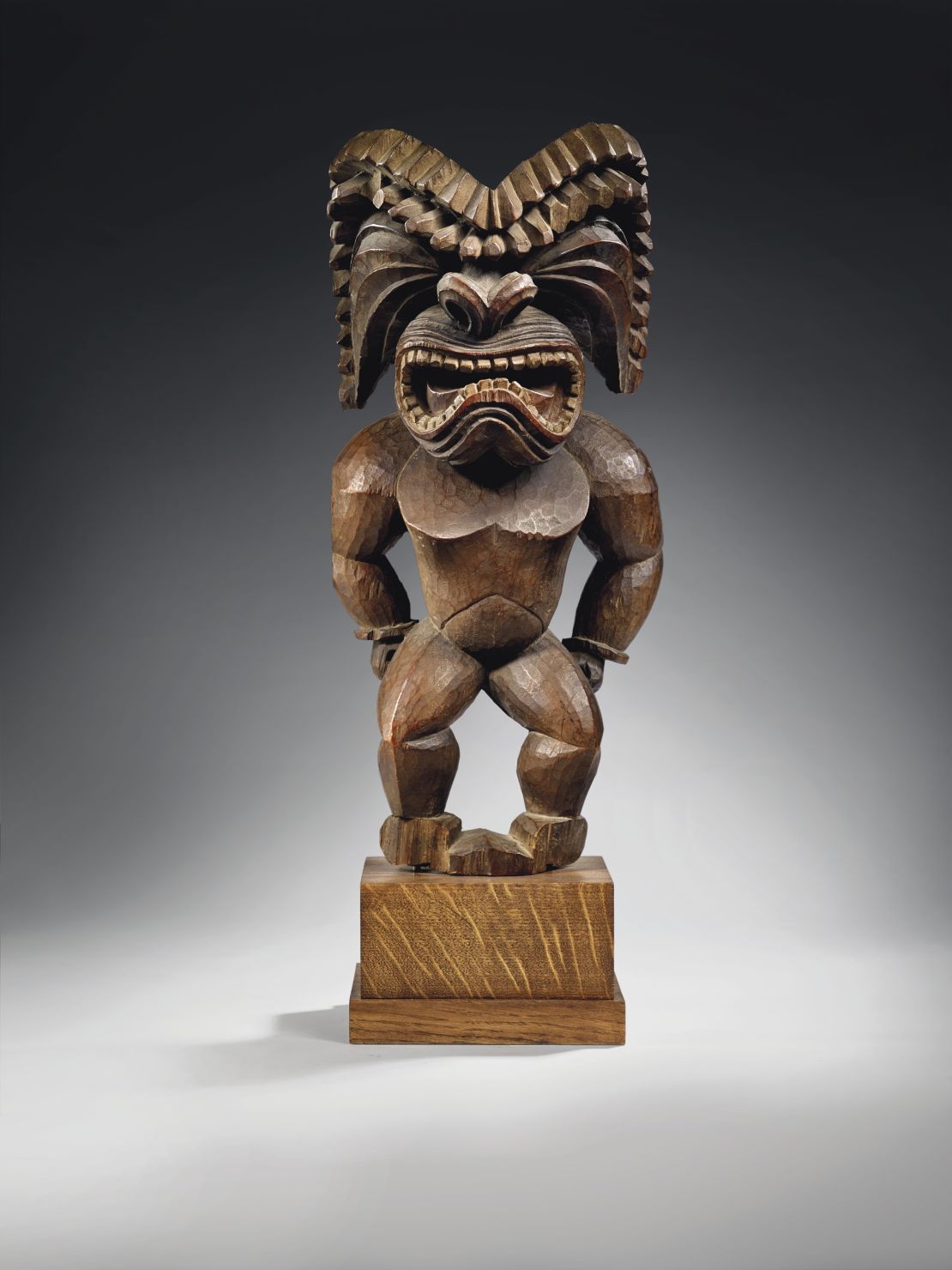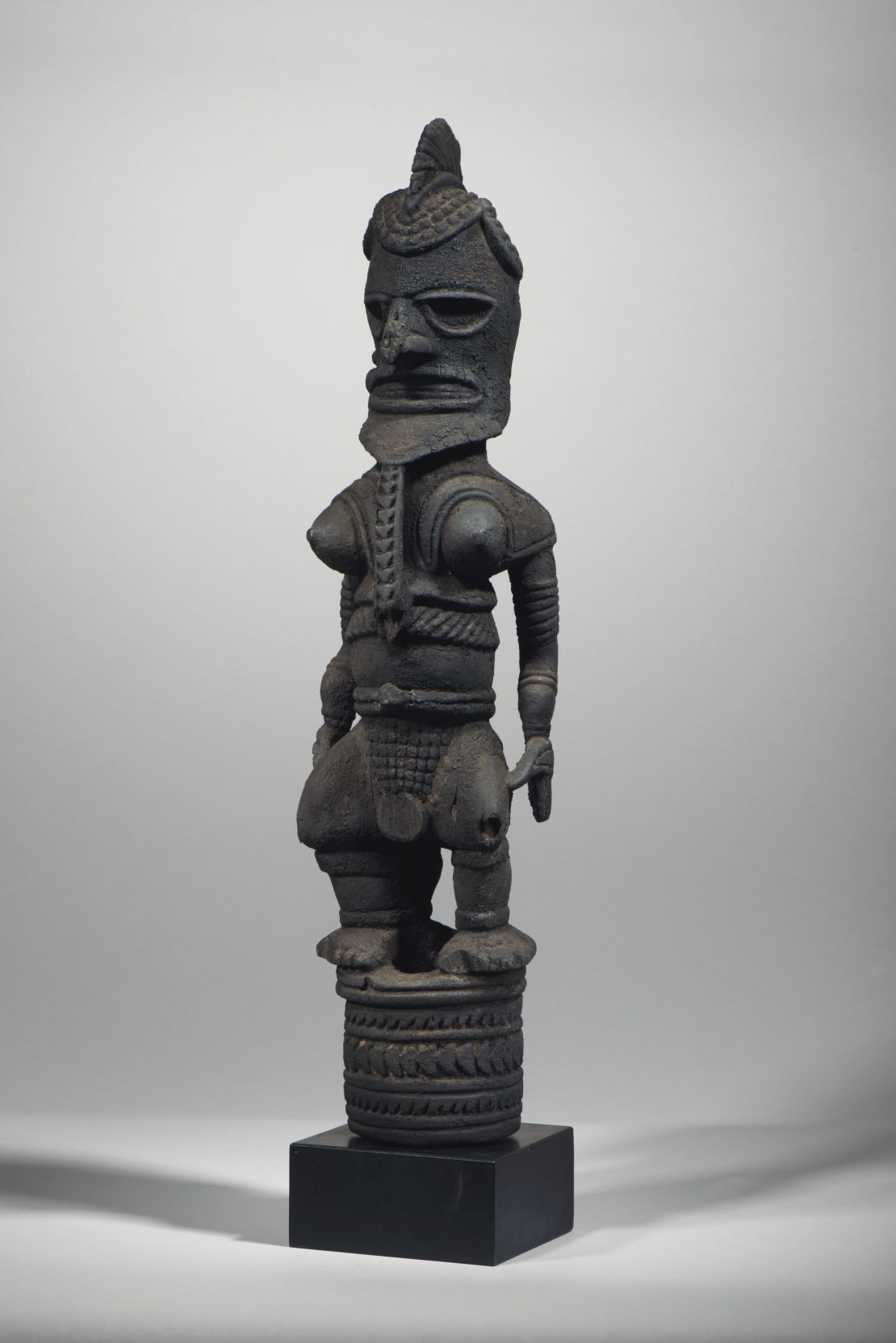In the 1920s, French art collector Pierre Vérité began building – almost in secret – one of the world’s most impressive stashes of African and Oceanic masterpieces. And over the years he developed an equally impressive client list.
When Vérité opened an art gallery in the Montparnasse area of Paris with his wife Suzanne in 1934, he saw the likes of Matisse and Picasso walk through the door to buy his pieces.
But he kept the crème de la crème off the shelves, according to Alain de Monbrison, an expert of African and Oceanian art, and a personal friend of the Vérité family.
“He used to sell art to some very important collectors,” Monbrison said over the phone. “He would sell some good items, but never the best ones – those he would hide away.”

‘Extremely rare’ pieces
Now, almost 200 of those masterpieces are up for auction at Christie’s in Paris, with a combined estimate of approximately $8 million. This is the second time that pieces from the Vérité collection have been offered for sale, coming after a 2006 auction broke records by bringing in more than $50 million.
Monbrison, who curated that sale, is back for this one, too: “We sold a very important part of the collection in 2006. This time we’re selling the pieces that Claude, Pierre’s son, had kept for himself,” he said. The top lot, a Hawaiian figure from the late 18th century, is expected to fetch up to 3 million euros ($3.5 million).

The carving represents the Hawaiian god of war, Ku-ka’ili-moku (meaning “land snatcher”), with whom the first ruler of the Kingdom of Hawaii, Kamehameha I, associated himself in his mission to unite the islands. It bears the hallmarks of the traditional “Kona” style, including a wrestler-like posture and a broad eight-shaped mouth as a display of aggressiveness.
The figurine closely resembles a piece from the British Museum’s collection, acquired by the London Missionary Society in 1822. Likely to have been carved by the same hand, the sculptures are both made of metrosideros wood, which is mostly found in the Pacific region.
“This is an extremely rare piece,” said Monbrison. “Never before has anything like this been offered at auction. All the other ones of this kind are in museums or institutions.”
A pioneering collector
Most of the pieces for sale haven’t seen the light of day for decades, due to a tradition of secrecy in the Vérité family. Even though the collection was largely complete by the end of the 1930s, it was only revealed to the public for the first time in 1950: “Pierre had bought a house that belonged to the painter Eugène Delacroix, about 30 kilometers outside of Paris. Most of the masterpieces were kept there, where nobody could see them,” said Monbrison.
One item at the upcoming auction has escaped the public eye for nearly a century. The Uli figure, which is a type of wooden statue carved only in the villages of New Ireland in Papua New Guinea, was last seen in public in 1930.

While he continued to loan items and contribute to academic studies of African and Oceanic art, Vérité stopped linking his name to his pieces in 1954. Loans were labeled as anonymous henceforth, adding to their mystique.
Although most of Vérité’s African art was sold in the 2006 auction, a few remarkable pieces remain available. Among them is a figure from the Democratic Republic of Congo which was part of a 1935 exhibition at New York’s Museum of Modern Art before being bought by Vérité. It belongs to an artistic style called Hemba, of which so little known at the time that it was incorrectly identified in the exhibition catalog. Most of these statues only found their way into collectors’ hands from the 1970s.
It is testament to Vérité’s pioneering vision that he acquired these pieces nearly 100 years ago. The value of these artworks has been rising ever since, according to Monbrison.
“We have never seen tribal art falling in value – it always grows,” he said. “That’s because it’s rare: There are more and more museums, but fewer and fewer pieces.
“I don’t like to speak in terms of investment, but buying tribal art anytime in the last 40 years would have been a great idea.”














